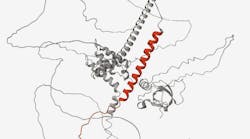Owlstone Medical announced the publication of a peer-reviewed study in the Journal of Clinical and Translational Hepatology, “Breath Biopsy to identify exhaled volatile organic compounds as biomarkers for liver cirrhosis detection”. The study identifies a set of volatile organic compounds (VOCs) that can identify patients with liver disease and separate them based on severity.
To address this need, Owlstone is developing a non-invasive, easy to use breath test that can be taken in primary care settings for the diagnosis of advanced NASH. The test, based on use of a panel of orally administered exogenous VOC (EVOC) probes, all of which are on the FDA’s Generally Recognized as Safe list, is intended to provide a way for clinicians to efficiently screen patients to identify those most likely to benefit from upcoming NASH therapeutics.
In the published study, performed as part of Owlstone’s Cancer Research UK funded PAN-study at Addenbrooke’s Hospital, Cambridge, UK, samples collected from 46 patients with advanced liver disease and 22 controls were investigated through Breath Biopsy OMNI global VOC analysis. This resulted in the identification of a number of VOCs that differed significantly between the groups, alteration of which appears to be driven primarily by impairment of liver function. One of the most significant was limonene, supporting previously published results, with others with known links to liver health including 2-Pentanone and dimethyl selenide. On this basis a model with strong correlation to disease severity was generated (AUC of 0.95 ± 0.04 on cross-validated test sets), which as a panel holds great promise for liver disease detection and monitoring.





